3 Reasons Artificial Lures Can Be Better Than Live Bait [Inshore Fishing]
- By: Joseph Simonds
- on
- Found In: Fishing Tips, Inshore Fishing
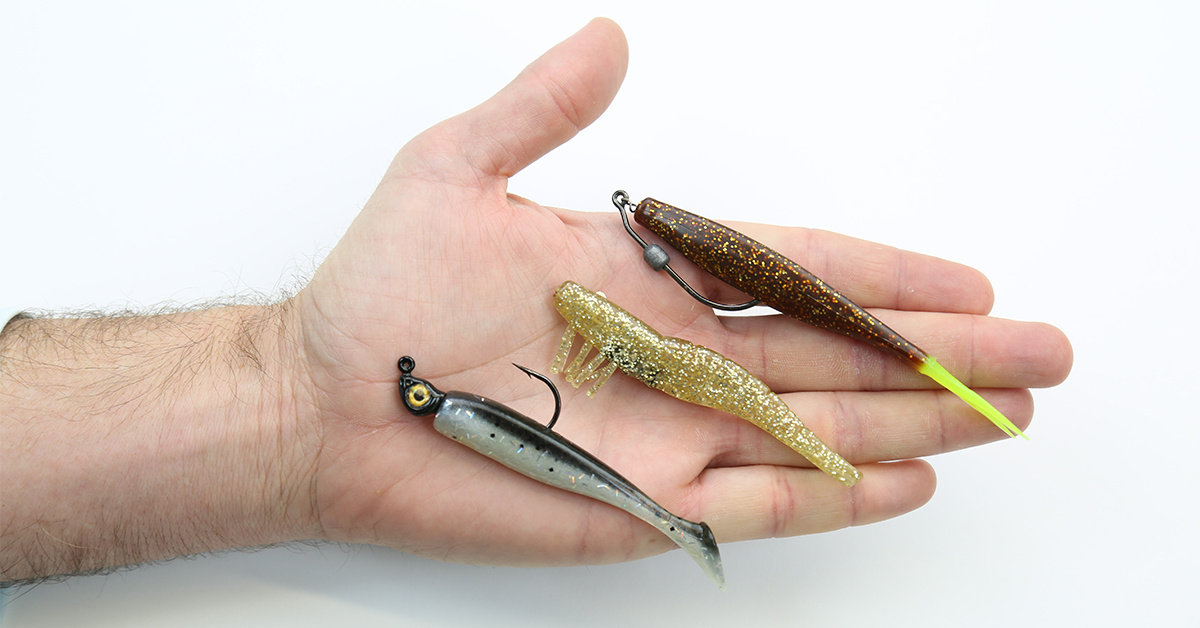
Allow me to introduce you to one of the most misused and misunderstood phrases ever uttered by inshore saltwater anglers…
“Live Bait Is The Only Way To Catch Big Inshore Fish.”
Wrong.
Wrong.
Wrong.
Now, before some of you get your waders in a wad, let me say this:
- Yes, live bait works incredibly well
- Yes, we sometimes use live bait here at Salt Strong
- Yes, I’ve caught some of the biggest fish of my life using live bait
- But NO, live bait is NOT ALWAYS better than artificial lures…
Yep, you read that last line correctly.
Live bait is not always the best option for catching inshore fish.
But before I reveal the three main advantages that artificial lures have over live bait, let me take a step back and tell you that twenty years ago my brother Luke and I would have thought you were absolutely crazy if you told us that someone could outfish either of us using artificial lures if we had fresh live bait.
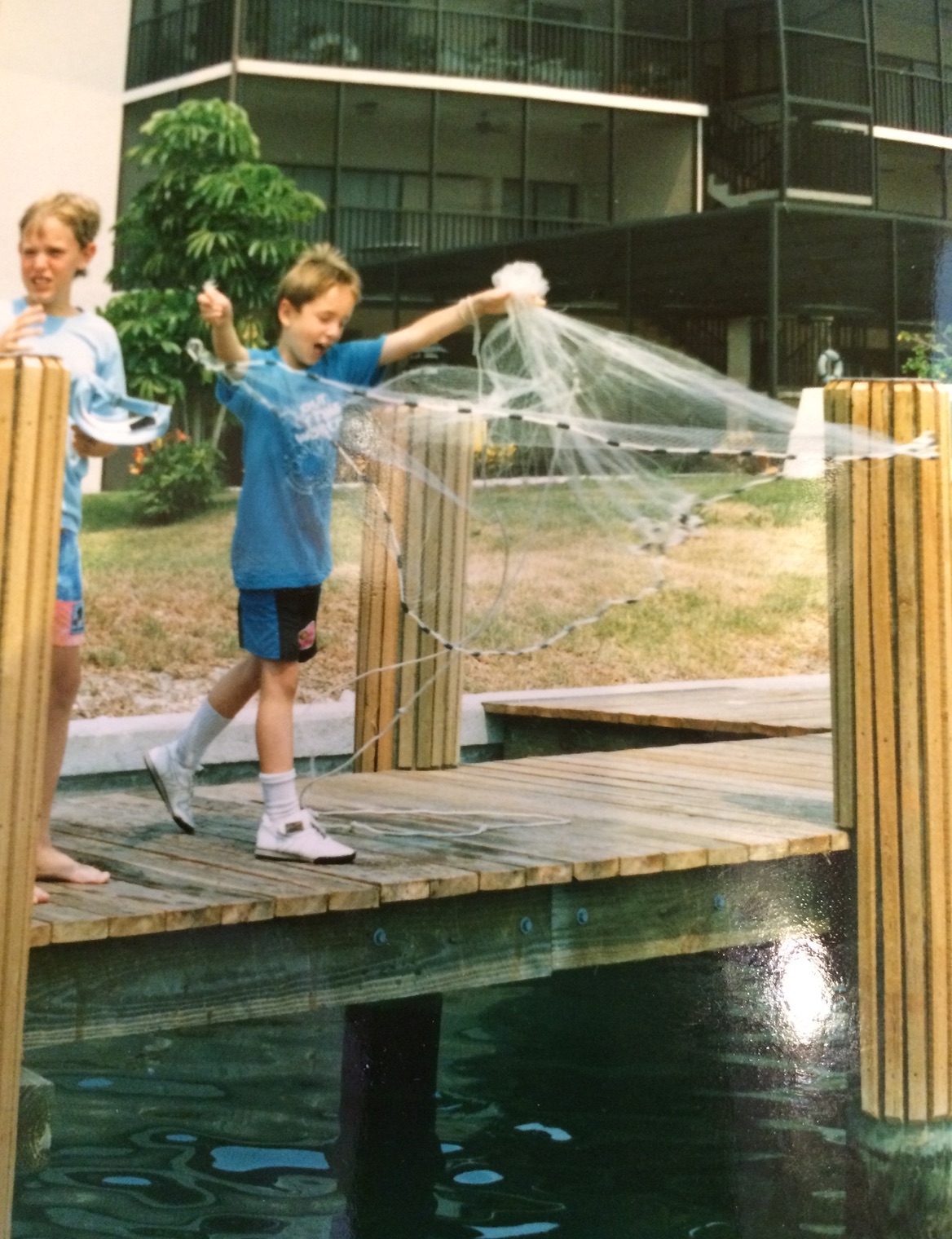
You see, back then the only reason we carried around artificial lures in our tackle box while inshore fishing was if we:
- Couldn’t find live bait
- Ran out of live bait
Sound familiar?
But that mindset completely changed when Luke moved to a new city after joining the real world and had his first career job after college.
Because now that his free time to go fishing was more difficult to find, his days of being able to fish for a full day were few and far between.
Instead, his fishing excursions were mostly 2-hour trips after work in the summers and/or a half day trips on the weekend.
So all of the time used to find, catch, and manage live bait started becoming a huge burden given that it was taking up such a large percentage of his “fishing” time…
And when factoring in all of overall “fishing” time that catching live bait was taking up on his short trips (spanning from loading the gear, finding bait, to having everything cleaned, and set back into place), live bait was simply not worth the time and energy as it focused away from his core goal of exploring his new fishery along the Indian River and catching his beloved snook, redfish, and trout.
After forcing himself to leave the cast net at home to force himself away from losing so much time on bait, Luke started getting better and better at catching fish on artificial lures.
And after a while, he was confident enough in using artificial lures that he would even use them while competing in tournaments against anglers that were using live bait… and his net winnings from the tournaments more than paid for all of the entry fees.
Fast forward to today, Luke and I both believe that every serious inshore angler needs to know how to catch fish with BOTH live bait and artificial lures.
Because let’s face it, if you can only catch a fish using live bait, then you are missing out on tons of opportunities to catch fish… especially if you’re like us and most often have time for just a half day trip at best.
Let me explain below.
Side Note: Luke even teaches a proven online course that guarantees you catch more redfish while using artificial lures (you can find out more about it here)
Top 3 Advantages Artificial Lures Have Over Live Bait
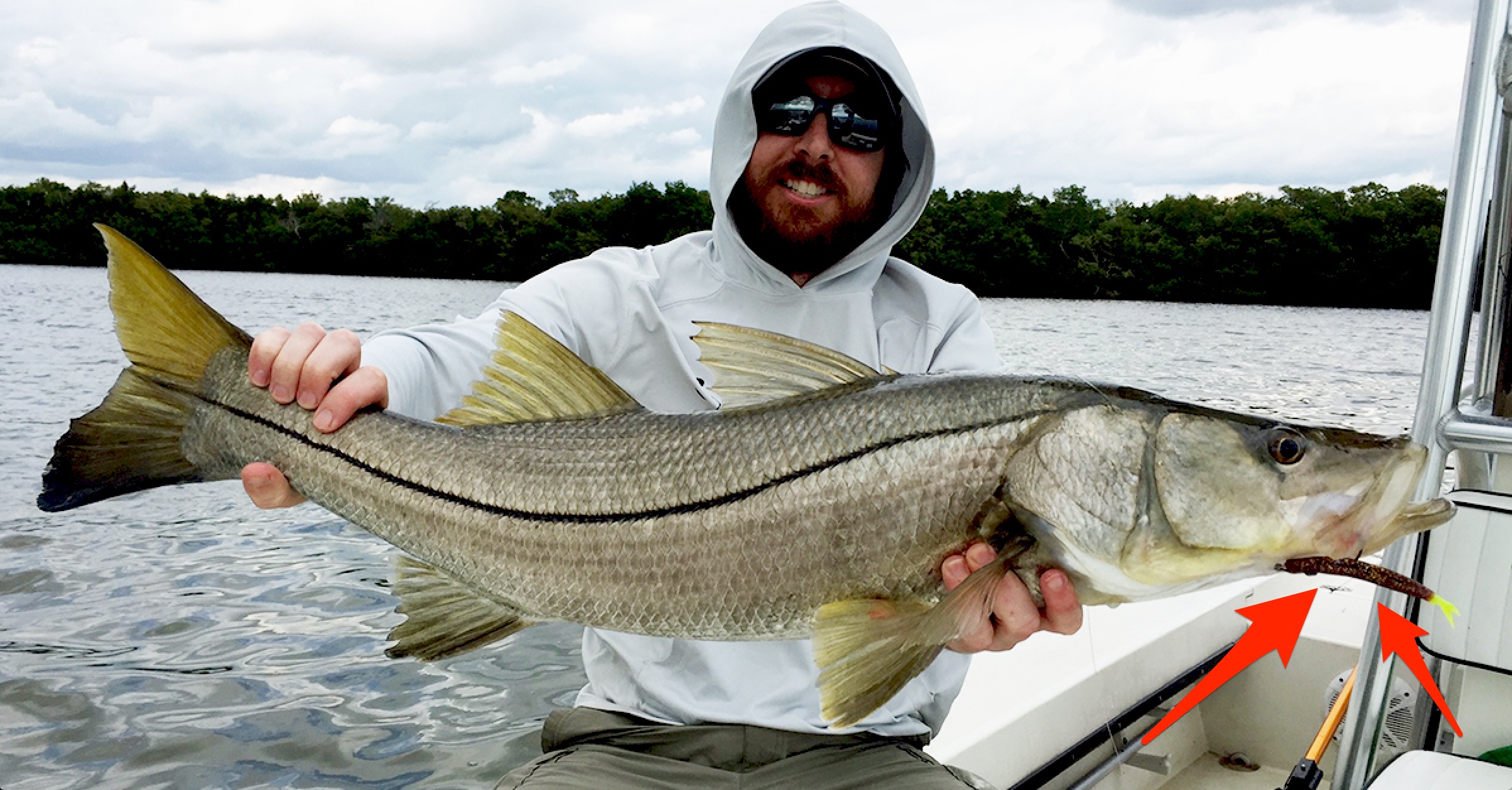
1. More Fish In Less Time
Just like there is no denying that live bait works (and can catch some lunker inshore fish), there is also no denying that catching live bait takes some time.
Of course, if you are a fishing captain, or if you get to fish every day and know where the bait is at any given time, filling up your live well might only take you 10-20 minutes from start to finish.
However, if you are a “weekend warrior” like the majority of anglers, getting live bait can take more time.
On bad days, an hour (or two) has passed from leaving the marina or boat ramp to finally getting in your spot with bait in the live well or bucket.
And can you guess what a good artificial angler has been doing the whole time a weekend warrior live baiter is looking for bait?
He or she is covering ground, getting their lure in front of fish, and catching fish (assuming they know how to cast and properly retrieve an artificial lure).
It was how Luke, our father, and I were able to recently place (and win a cool thousand bucks) in an inshore tournament where we were the ONLY TEAM that used artificial lures instead of live bait.
How did we do it?
Well, we had some big trout and our limit of slot redfish before many of our competitors were still out tossing their nets looking for live bait…
And when you can master artificial lures, it gives you opportunities to catch nice inshore fish during times like these:
- Before work when you only have 30-45 minutes to fish
- On your lunch break
- While traveling where you can only fish from land (and you don’t have any net, bucket, live well, etc)
You see, to me, fishing is similar to dating.
If you are looking to meet as many women (or men – not that there is anything wrong with that…) as possible, your chances increase if you cover as much territory as possible, while getting your smile and conversation (aka bait) in front of as many of the opposite sex as possible.
On the other hand, the guy or gal that shows up late to the bar and sits in the same chair the entire night hoping someone comes up next to him or her isn’t as likely to “catch as many dates” as someone that is first to the bar and covers and meets everyone in the place.
They might land a lunker or two, but it will take a lot more time and a lot more sitting around waiting.
Same goes for fishing.
More time + more territory + more presentations = more fish (assuming you know how to present your lure like a pro).
Which brings me to reason #2…
2. More Control
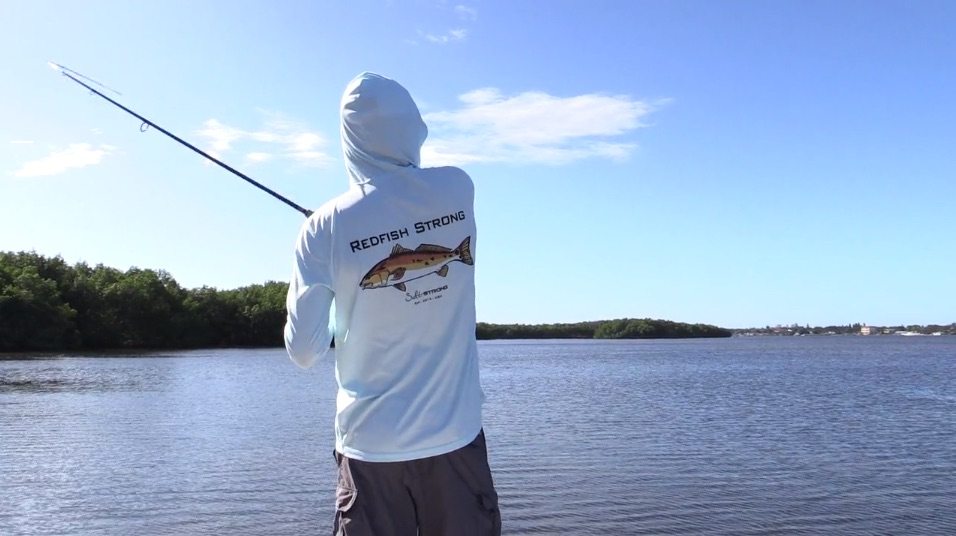
There are actually three reasons that artificial lures give you more control than live bait:
- Control of your bait presentation
- Controlling your time better
- More Control & Freedom of not needing something to keep your bait alive
Let’s cover all three:
Control Of Your Bait Presentation
With live bait (or cut bait, dead shrimp, etc), you don’t have as much control over how your bait is moving or what it looks like underwater as you would with an artificial lure.
If the bait is dead, it simply sits on the bottom, goes with the current, or sits under your bobber.
But then again it’s dead. Not much control needed. You just hope for the best.
But if your bait is alive, it moves around in the area you cast it out to… sometimes getting wrapped up in the line, in the grass, in structure, etc.
Some could argue it doesn’t matter, but there are certainly many missed opportunities from live bait not looking like “live bait”.
But with artificial lures, you control the action.
If you want the bait to look like an injured fish, then you have the control to do that.
If you want the bait to pop off the bottom right in front of a tailing redfish, then you have the control do that.
If you want the bait to look like it’s running away from a monster redfish on top of the water, you have the control do that.
Now, I have nothing against soaking a live bait or cut bait, putting the rod in the rod holder, and sipping on a cold beer waiting for the line to start screaming out…
In fact, I think every angler should do that every now and then.
But I also know that I get more satisfaction from catching a nice inshore fish when I had full control of the situation.
There is something awesome about landing a trophy fish knowing that you controlled the entire presentation using a fake bait.
As one executive of a well-known lure company once told me,
“Anyone can catch a big redfish or snook using something they eat every day, but it takes a special angler to catch a big redfish or snook using a piece of plastic with a hook sticking out of it…”
Controlling Your Time
The second part of control is controlling the time.
Most inshore anglers will tell you that if they could only pick one time of the day to fish it would be the morning during the twilight hour (when the sun is starting to come up).
And if you miss the best time to fish (which in many cases is the twilight at dawn) because you are looking for bait, then you are definitely missing out on some nice fish.
Don’t be the angler that misses out on some of the best bites because you rely 100% on live bait and find yourself scouting around looking for live bait during the ideal fishing hours.
It’s just one other reason we believe all anglers should know how to catch consistent fish with BOTH live bait and artificial lures.
Control & Freedom Of Not Relying On A Live Well
Let’s face it, there are times when you don’t have time for a live well.
There are times when you are fishing from a kayak, or from a paddle board, or from land when you don’t want to lug around a net or a bait bucket.
There are times when you are traveling to a new area, state, or country and want to get some quick fishing in while exploring new areas and don’t want to have to carry all of the extra live bait gear.
There are even times when your live well breaks down (trust me, we know from multiple experiences) and you have no other option that to use artificial lures.
Also, many boats have livewell pumps that give off a lot of vibration into the water… this can spook many quality fish from a good distance away when fishing shallow flats (especially the big trout which are very spooky in shallow water).
These are the times when it pays to have confidence in your artificial lures.
When you know how to catch consistent fish with a soft or hard plastic, you have control and freedom in your fishing game.
3. More Bait = Fatter Fish
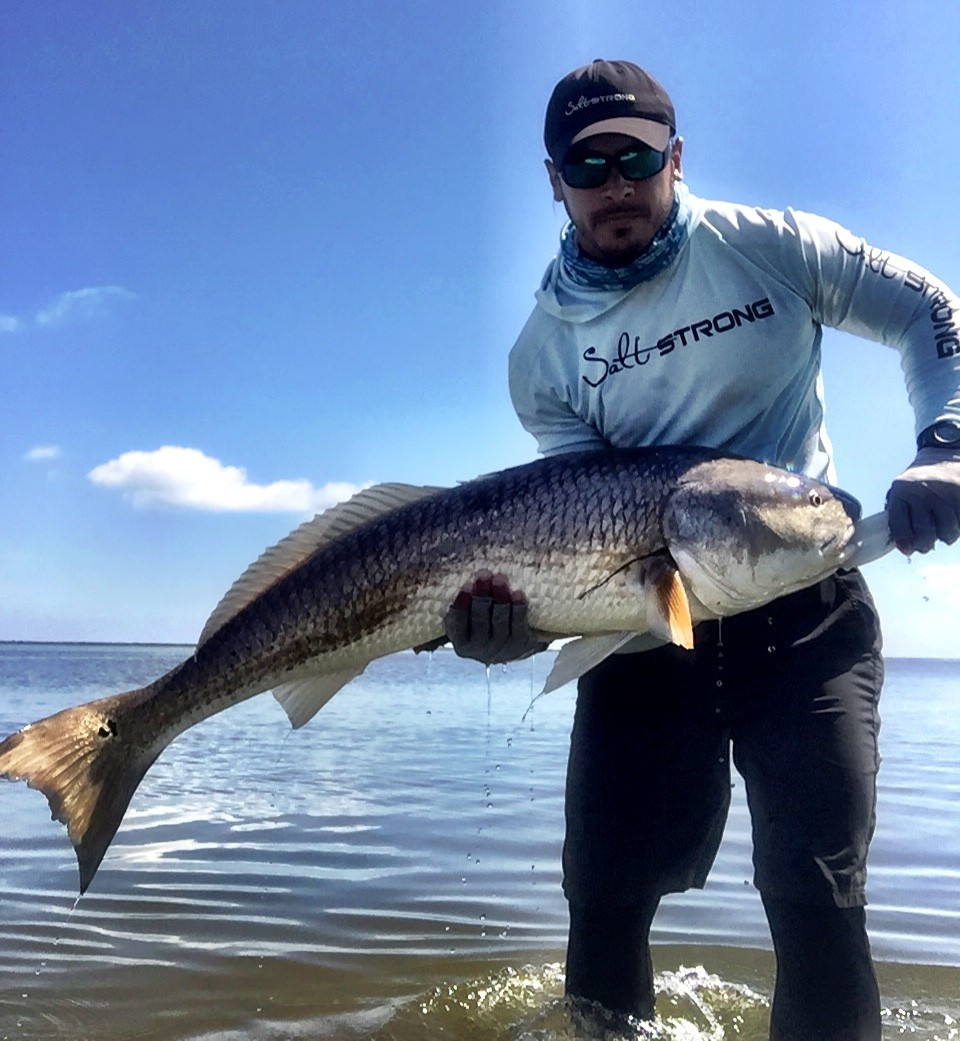
Let me say first and foremost that using live bait is part of fishing.
Not only that, but I want to go on record that we have no issues with anyone using live bait to catch fish.
But there is something that doesn’t sit well with me, and quite frankly, it should bother you as well.
It’s when an angler overloads their livewell with more live bait than they could ever use, just to “black it out”.
Not to mention the countless amounts of bait fish that die in the net when anglers are unable to match the mesh size of the net to the bait they are casting on (resulting is “gilled” bait).
To make this abundantly clear, I’m NOT talking about your everyday angler or fishing guide that uses the normal amount of live bait to catch fish.
I’m talking about the person that feels the need to kill 200+ bait fish in order to catch one redfish…
I’ve seen anglers pull up to a dock with hundreds of dead bait fish still stuck in their net hours after trying to get bait (I can only assume it took them so long to finally find bait that they couldn’t waste any more time to get to their spot…)
To me, that is not responsible fishing.
What ends up happening is hundreds of fish die for absolutely no reason.
Why is this an issue?
Well, if every inshore angler killed hundreds of baitfish on every single trip then eventually there would be no food left for the inshore fish that we love and cherish.
If we truly want to have our kids, grandkids, and great-grandkids to have the same fishing opportunities that we have had, then we can’t get sloppy on killing fish when we don’t need to.
It still baffles me to see all of the “Fishing Police” comments on Facebook and in fishing forums about someone holding a fish the wrong way or “rubbing too much slime off the fish,” but not a word is said when someone kills an entire school of baitfish just so they can prove they can toss a big net.
Big fish won’t be big unless they have lots of baitfish to eat…
And if you believe that there is an unlimited amount of any resource in this world, then you are mistaken.
Any resource (including live bait) that gets abused and wasted for too long will eventually be negatively affected.
Here is a great rule of thumb:
- Only keep the legal fish you are going to eat
- Only catch the baitfish you are going to use
If all anglers practiced just these two simple rules, our kids and grandkids will thank us for it.
It’s also just one more reason to learn how to fish BOTH live bait and artificial lures.
Conclusion

Facts:
- Live bait works.
- Artificial lures work.
And the angler that can master both will always be consistent at catching more inshore saltwater fish.
The truth is many live bait anglers don’t enjoy using artificial lures because no one has taught them how to do it the right way.
There is certainly a science to catching consistent inshore fish using artificial lures for sure.
If you have any interest in learning more about catching redfish quicker than you ever imagined, then click this link to take the redfish analysis tool.
Not only will you get a customized fishing tip, but you can find out if you are a fit for the private online redfish course.
Tight Lines.
P.S. – If you think your angler friends or fishing networks would like to see this, please Tag them or Share this with them. Fish On and Tight Lines!
Related categories:
STOP WASTING TIME ON THE WATER!
Do what the “SMART ANGLERS” are doing and join the Insider Club.
Here’s what you’ll receive today when you join:
- Weekly fishing reports and TRENDS revealing exactly where you should fish every trip
- Weekly “spot dissection” videos that walk you through all the best spots in your area
- Exclusive fishing tips from the PROS you can’t find anywhere else
- Everything you need to start catching fish more consistently (regardless if you fish out of a boat, kayak, or land).










Fishing is my hobby and I go fishing on the lake that flows near my house. It always gives me immense pleasure to catch a fish. I learn new techniques of fishing every time. This information is very helpful for me to learn about fishing lures.
How effective is the Gulp Peeler Crab for Redfish. How best to rig?
Regarding #1, all this time I thought I was fishing and come to find out I was just reliving my college dating years. Lol.
In the Keys, the motto is “if you chum, they will come.” Get them fired up and you can catch them with a peanut butter and jelly sandwich.
I almost always go fishing prepared with a basic array of artificials AND some natural bait – to help maximize success. I rarely buy any natural bait (never buy shrimp) – I gather my own natural bait (baitfish and/or Blue Crabs – males only, sometimes Fiddler Crabs).
Baitfish are kept alive in aerated, refreshened water (inexpensive and simple battery-powered DIY container). Unused bait fish are released at day’s end. Crabs are kept live and unused crabs are released at day’s end (unless I know I’m fishing the next day).
Gathering live bait is educational, informative and enjoyable (in my opinion). Discovering what natural bait(s) are in a given area gives an indication of what prey are there for the area’s targeted game fish. When fishing with artificials I don’t use “exotic” colors, rather “natural” colors – like those that emulate as closely as possible the area’s natural prey I gather.
In certain conditions, i.e., low clarity, relatively greater turbulence, I think targeted game fish rely less on vision and more on olfaction. In such a circumstance, more often than not for me fresh-cut mullet will catch (certain) fish when they’re otherwise ignoring artificials.
Manufacturers of artificials go to great lengths to mimic natural prey, some including attractants/scents. Some companies, i.e., ProCure, specialize in attractants/scents that supposedly mimic Mother Nature. Use of artificials and/or attractants/scents requires anglers’ expenditure, trips to the bait & tackle store, online purchasing, etc. Anglers spend significant monies on artificials. Many artificials have limited durability and longevity. Purchased artificials at times are lost to cut-offs, structure, etc., left behind in the waters. And I can’t help but wonder what (if any) may be the unintended negative consequences on the environment resulting from the manufacturing process of artificials (particularly soft plastics).
Recently I fished a creek I know well – in a spot that more often than not is productive for me. I tried several artificials, riggings, methods with no result. After 30 minutes I moved about 100 yards away. Not gone from that spot 5 minutes, along came another angler fishing the spot I just left. Within his first few casts he began to holler and hoot. He reeled in what appeared to be a good-sized redfish. Coincidentally we returned to the launch at the same time. When asked he told me the red was 25″, caught on a live shrimp.
Generally I fish with artificials and natural baits. I catch fish with artificials and natural baits. Do I catch fish with one more than the other? Depends on the conditions on a given day. Now, that’s “reel” fishing.
Good stuff Ricki
A great discussion of the topic. Like most, I started out with live and fresh dead bait in lakes, rivers and streams. Got to be really good at it too. Used artificials a little, out of convenience mostly. Never could get into live frogs, though, and weedless plastic frogs were my go to “bait” as a kid, and I branched out to other arificials and techniques for most freshwater as I fished my way through my teens and early twenties. Joining B.A.S.S. and competing in artificials-only tournaments completed my conversion and expanded my expertise with artificials. This article really hits home re. live bait vs artificials, and when and why. Having moved to coastal Florida several years ago.I was kind of struck by the numbers of people fishing exclusively with bait. Like you said, there’s a time and place for everything but at my local fishing club meeting last month, the guide we had as a guest speaker asked how many of us fished artificials. I was the only member out of twenty five who raised a hand. Wow! I can’t see how these folks accept the catfish bycatch, gut-hooked tor out-of-season fish, lost fishing time while the good tides are moving, etc I always carry some frozen shrimp and a sabiki rig if I think I need something live and/or smelly to use or have something to soak during slack tide or beer time. And have no problem buying and carrying live stuff for a partner who uses it.
But I never heard anyone raise the point that excessive cast-netting can have a hit on the foodchain. Could well be, and I never considered that before reading this. I’ll be interested to read other reactions.
Hank
Cape Coral, FL
This is an edited version of my comment below
Good stuff Hank. And spot on. We have found the same thing when talking to fellow anglers. Many of them rely 100% on live bait and look at artificials as a last resort only. Tight Lines!
Sadly those the bait dunkers never heard of the Kandlefish metal jig, mfg’d by Wahoo Fishing Products in Punta Gorda, FL.